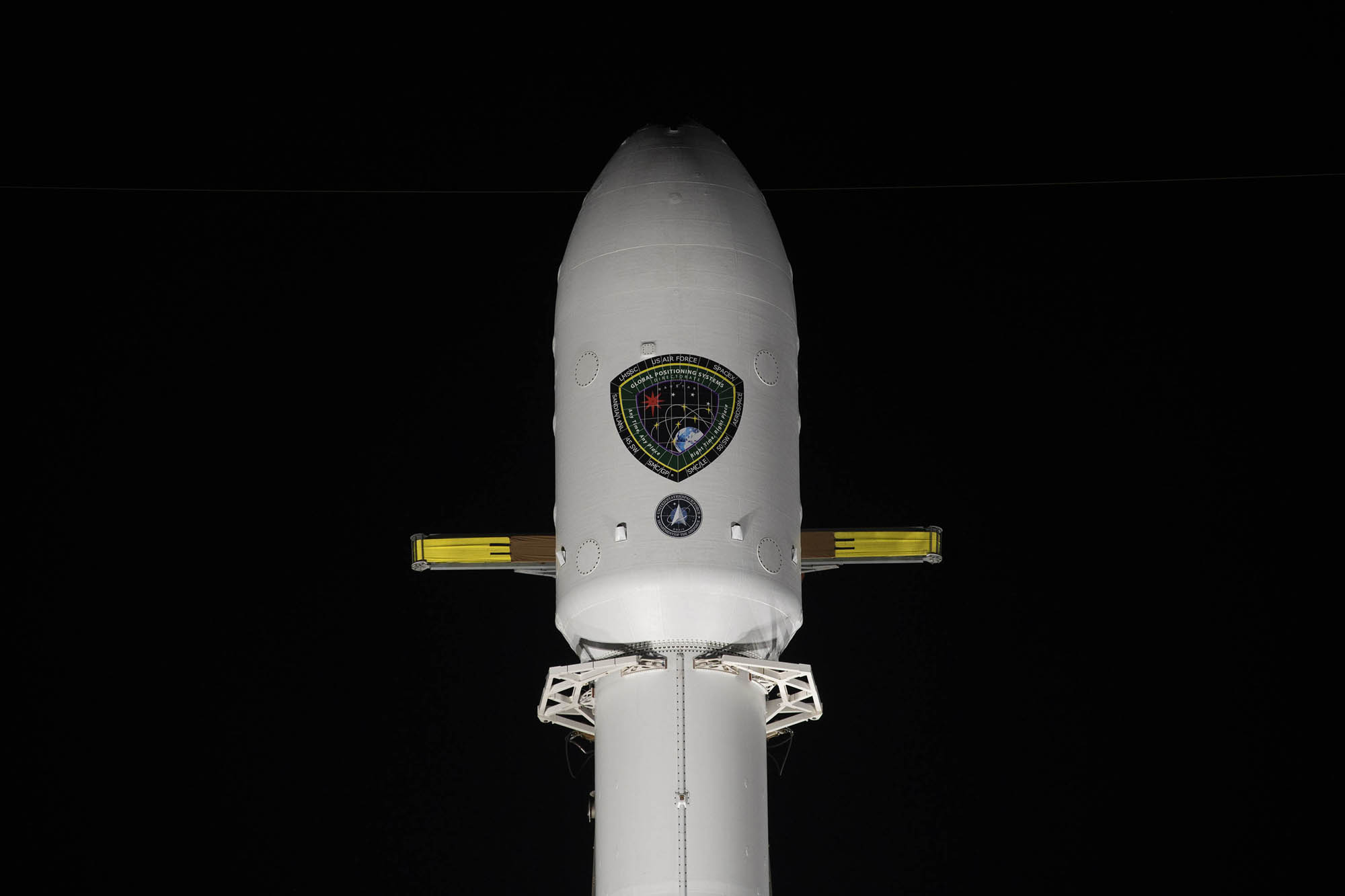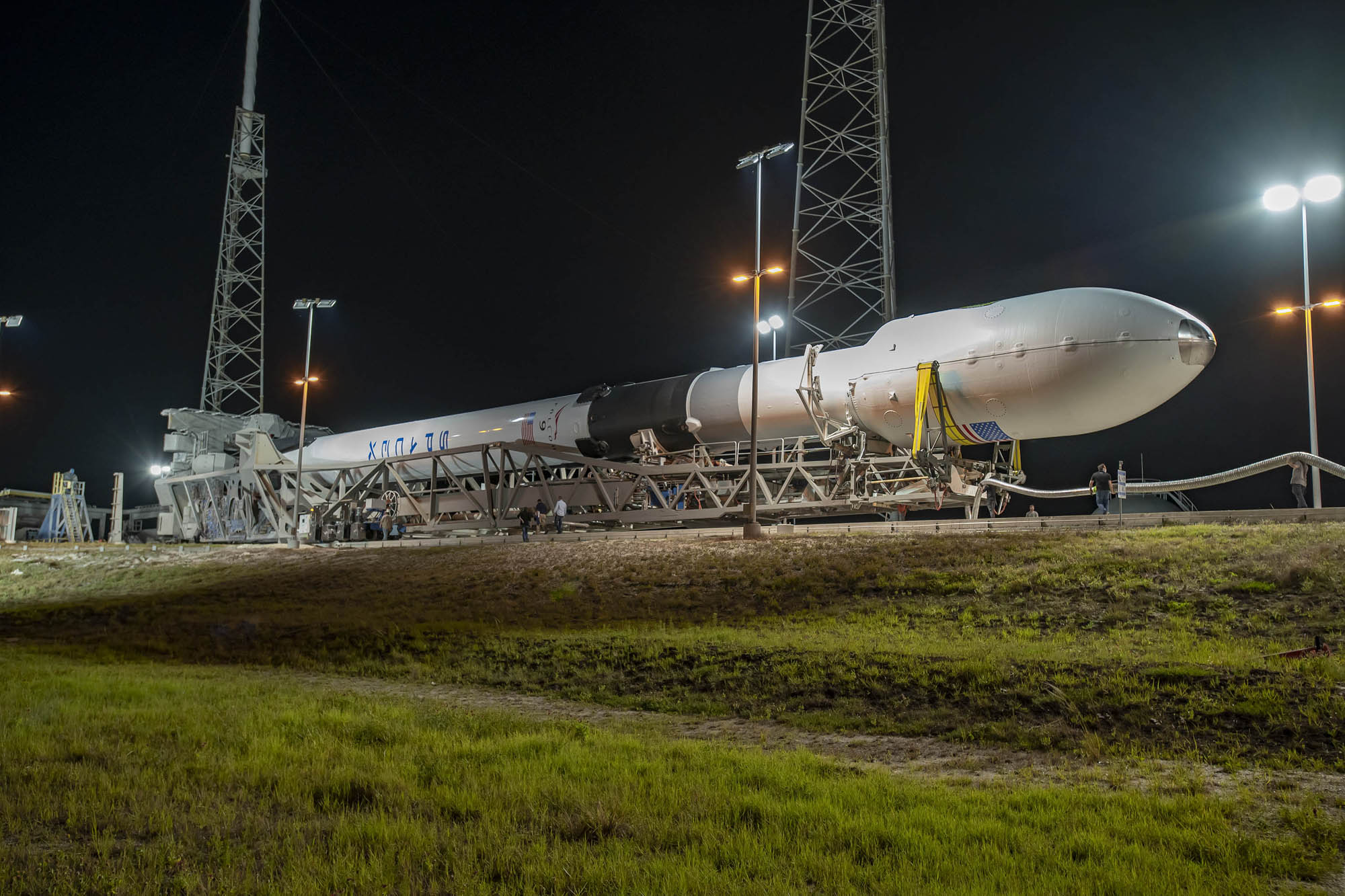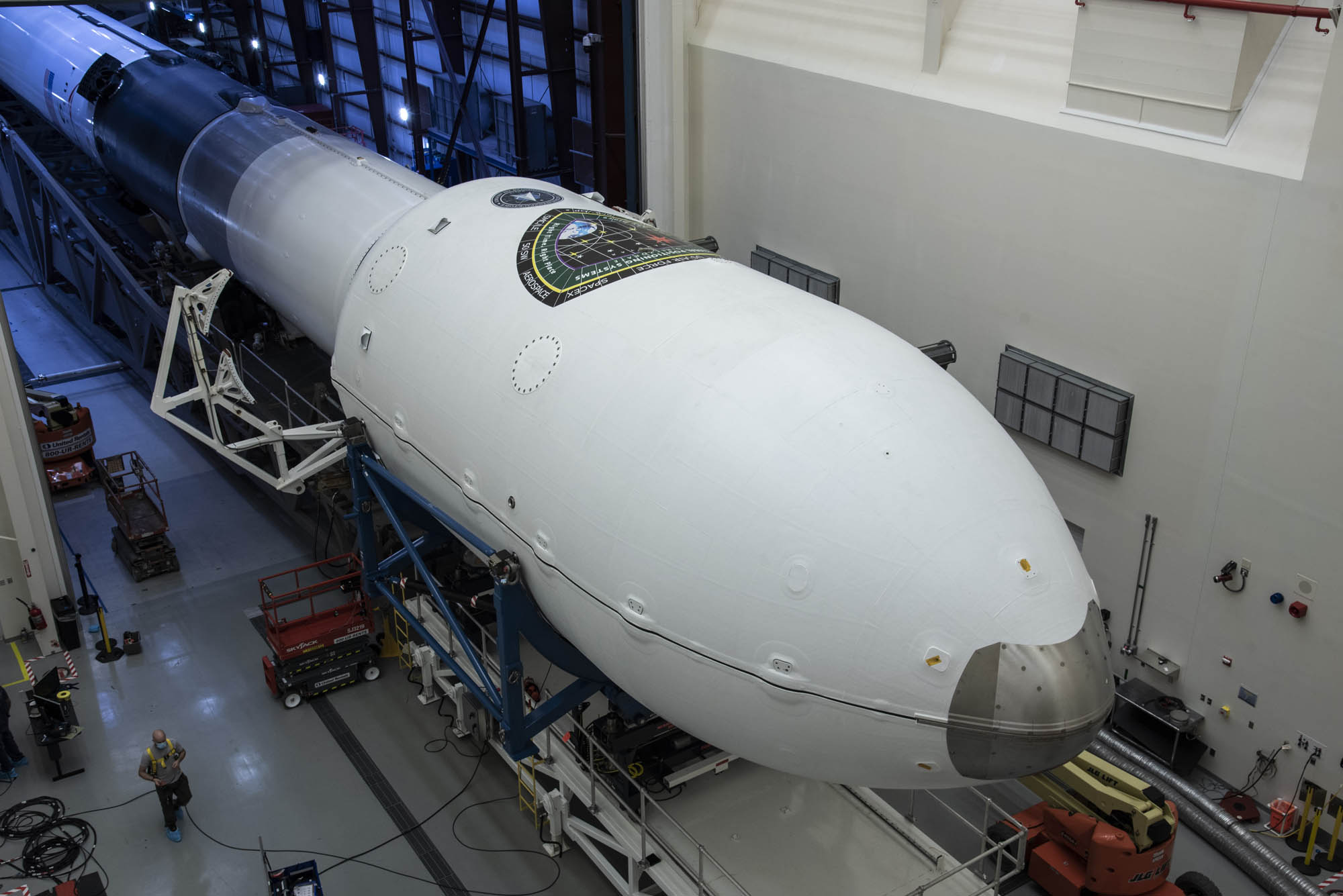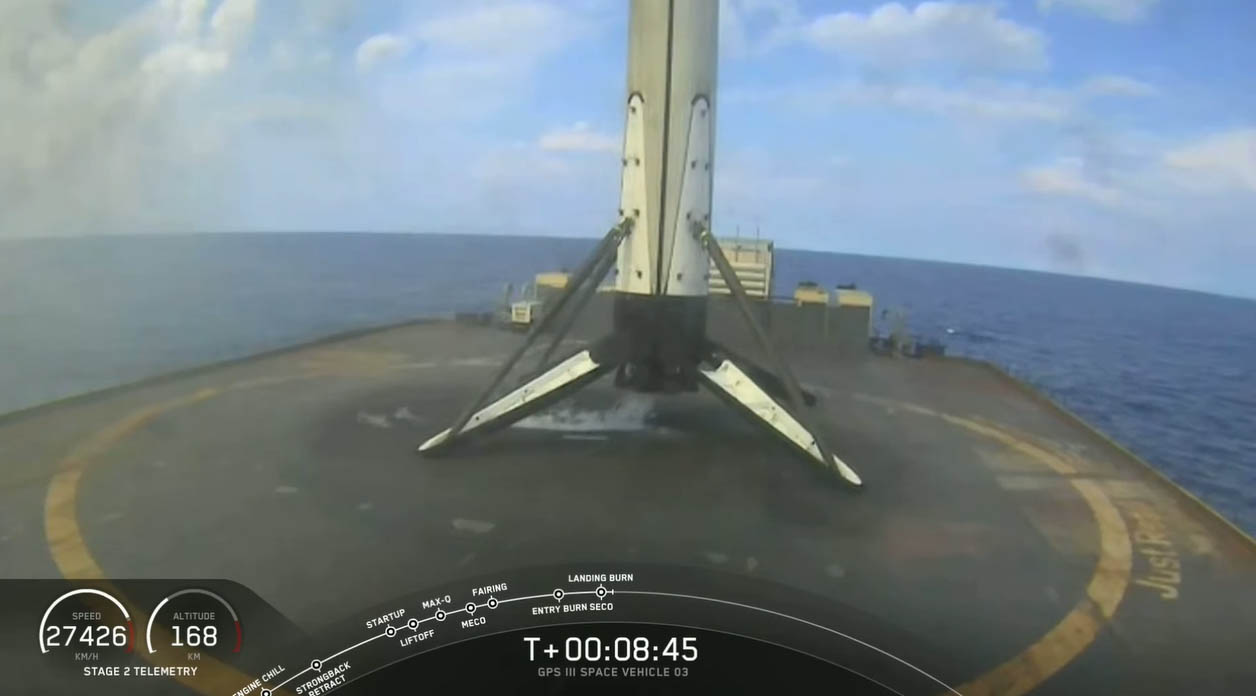SpaceX launches advanced GPS satellite for US Space Force, sticks rocket landing
CAPE CANAVERAL, Fla. — SpaceX successfully launched its 11th mission of the year, lofting a next-generation global positioning satellite into space for the U.S. Space Force.
A shiny, white Falcon 9 rocket took to the skies today (June 30) at 4:10 p.m. EDT (2010 GMT), taking off from Space Launch Complex 40 at Cape Canaveral Air Force Station in Florida.
Today’s launch is part of an ongoing effort by the Department of Defense to upgrade GPS satellites currently in space. The constellation of aging GPS satellites was launched roughly 20 years ago and technology has changed significantly in that time. The particular satellite launched today will replace one of the oldest ones in orbit.
Built by Lockheed Martin, this is the third GPS satellite of its kind to launch and will join two others just like it that are already in orbit. SpaceX launched one of those two satellites on a different Falcon 9 rocket in December 2018 and the other satellite launched atop the very last Delta IV Medium rocket in August 2019.
Related: The U.S. GPS satellite network explained

Called GPS III SV03, the 9,505-pound (4,311-kilogram) satellite is part of a family of satellites known as GPS III, which are designed to be three times as accurate and have up to eight times improved anti-jamming capabilities than their predecessors.
The upgraded spacecraft is also packing a suite of new features. For instance, it has the ability to communicate with satellites in other navigation constellations, such as Europe's Galileo constellation. This allows users to connect with even more satellites in space, allowing for even more accuracy. The new batch of GPS satellites also has a longer lifespan, enabling them to remain in orbit for longer.
Get the Space.com Newsletter
Breaking space news, the latest updates on rocket launches, skywatching events and more!
Today's launch is SpaceX's first dedicated mission for the U.S. Space Force, which was established in December 2019 by President Donald Trump. Just like the Marine Corps functions within the U.S. Navy, the U.S. Space Force is under the umbrella of the U.S. Air Force and works to oversee all space operations.
The Space Force originally planned for this satellite to launch in April, but officials opted to delay the launch until now. This enabled teams the opportunity to work on procedures that would keep everyone safe during launch preparations while adhering to CDC guidelines during the COVID-19 pandemic.
"We focused on the people, the processes and the procedures as well as the facility (meaning Lockheed Martin’s facility in Colorado where the satellite was built and processed prior to launch)," Col. Edward Byrne, a senior leader of the medium Earth orbit space systems division at the Space Force's Space and Missile Systems Center told reporters during a press call on June 26.





Small spaces and tight working conditions in Colorado were a concern, but the extra time created by the delay allowed the team to implement new procedures and get the satellite ready to launch.
In order to adhere to CDC guidelines and maintain the safety of all personnel, U.S. Space Force officials reduced the number of team members needed to handle the launch, spaced out work stations and installed partitions between workers.
Here at the Cape, the 45th Space Wing, the entity that oversees launches along the East Coast, has been taking its own precautions. They have been making sure crews rotate between missions, maintaining social distancing practices, implementing temperature checks as well as reducing the number of people on consoles. Wing commander Brig. Gen. Doug Schiess believes the safety protocols practiced over the last three months have been effective.
During the same call, Schiess noted that the 45th Space Wing has overseen several launches during the pandemic — including the first crewed launch of SpaceX’s Crew Dragon that sent two NASA astronauts to space — and that no one in the 45th Space Wing has gotten sick up to this point.
"We're three months into this and we've done an incredible job,” Schiess said. "We've had several launches during the coronavirus situation and we haven’t had anyone get sick."
Florida has recently seen a major uptick in new cases of COVID-19, the disease caused by the novel coronavirus, but Schiess remains optimistic that the procedures in place will enable launches to continue.
The mission featured a brand new Falcon 9 rocket and, unlike the first GPS mission launched by SpaceX in 2018, the California-based rocket builder was given permission to recover the Falcon’s first stage booster.
A few days prior to today's flight, SpaceX deployed its drone ship, named Just Read the Instructions, to set up camp 394 miles (632 kilometers) downrange in the Atlantic Ocean and wait for the booster’s return.
Approximately nine minutes after liftoff today, the first stage booster gently touched down on the deck of the drone ship. SpaceX has, to-date, had more than 50 successful catches.

The company's twin fairing catchers — named GO Ms. Tree and GO Ms. Chief — are attempting a recovery of their own today. The two vessels are also stationed out in the Atlantic and will retrieve the payload fairings used on today’s mission.
The clamshell-like hardware — which is the rocket's nose cone — is designed to protect the payload as the rocket travels through the atmosphere. Once the vehicle reaches a specific height, the two fairing halves are jettisoned and fall back to Earth.
The two pieces account for approximately 10% of the Falcon’s price tag, and SpaceX could save as much as $6 million per flight by scooping them out of the ocean (or catching them as they glide back to Earth) and reusing them.
To date, GO Ms. Tree has successfully snagged three fairing pieces as they returned, and SpaceX has flown refurbished fairings on several missions to date.
SpaceX launched three rockets in June and with the delay of its most recent Starlink mission, July is shaping up to be another busy month for the private space flight company. The next Starlink mission, which will carry two Earth-observing satellites for BlackSky, is expected to launch July 8.
Follow Amy Thompson on Twitter @astrogingersnap. Follow us on Twitter @Spacedotcom or Facebook.
Join our Space Forums to keep talking space on the latest missions, night sky and more! And if you have a news tip, correction or comment, let us know at: community@space.com.

Amy Thompson is a Florida-based space and science journalist, who joined Space.com as a contributing writer in 2015. She's passionate about all things space and is a huge science and science-fiction geek. Star Wars is her favorite fandom, with that sassy little droid, R2D2 being her favorite. She studied science at the University of Florida, earning a degree in microbiology. Her work has also been published in Newsweek, VICE, Smithsonian, and many more. Now she chases rockets, writing about launches, commercial space, space station science, and everything in between.









